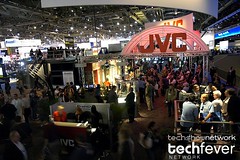Today, many video cameras provide a “24p” mode for recording video at 24 frames per second.
The default or normal mode of most video cameras is “60i” which is 60 half frames per second. Many cameras also now feature a “30p” mode or 30 frames per second.
Why all these choices?
See below – 60i is an old technology that we still use for historical reasons.
If you are making your video for online distribution, you definitely want to choose 30p or 24p mode. These record in “progressive” (like a digital still camera rather than the funky interlaced 60i mode) which is also compatible with computer displays.
Consequently, if you want to output to the web or to a computer, you will want to use 30p or 24p “progressive” modes to avoid the “interlace jagged edges” of 60i. (It is possible to de-interlace video too – but that is for another day.)
So why 24p?
Some people like that it looks like 24 fps film. I like it for a much different reason: better low light performance and better compressibility for the online world.
When you shoot at 60i, you’ll typically use a shutter speed of 1/60th of a second. When you shoot at 30p, you’ll likely use either 1/60th or 1/30th of a second.
At 24p, you’ll likely use either 1/48th or 1/24th of a second.
1/24th of a second lets in 20% more light than 1/30th of a second and more than twice as much light as 1/60th of a second.
Consequently, 24p has some what better low light performance – that is, the camera will add less video amplification, which adds a bit of noise or graininess to the images. Shooting in 24p means cleaner, less grainy images – compared to higher shutter speeds.
Another advantage is editing and compressing for the web. A video clip recorded at 24p has 20% fewer frames than one recorded at 30p – so it takes less time. And there are situations where I’ve recorded a live event that I turn around and post online as fast as possible.
Another issue is compression. For a given video streaming data rate, say 1 Mbps, 24 fps will will compress a bit better than 30 fps. But do realize it is not a straight forward “definitely better” as MPEG4 compression depends heavily on the nature of the content of the frame.
Editing 24p
Unfortunately, this may require an advanced or professional editing package. I can’t help you there very much, but I did write some info about doing this on a Mac. (I also do some editing on Windows but have not tried this there.) Some additional information is also here.

